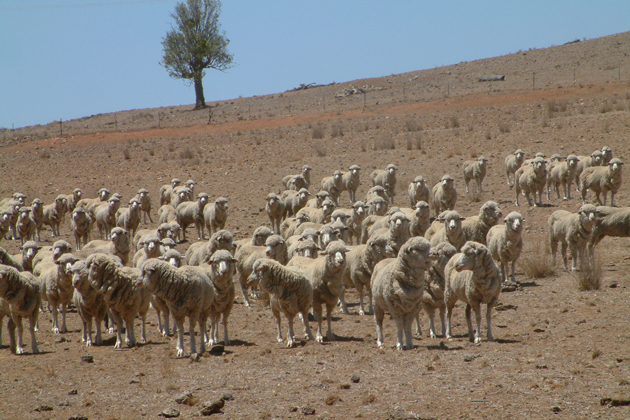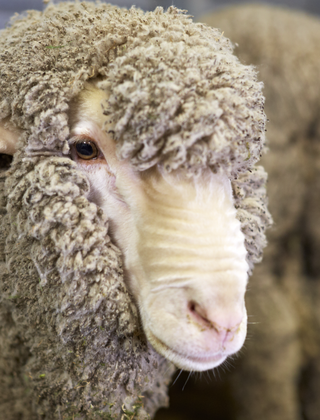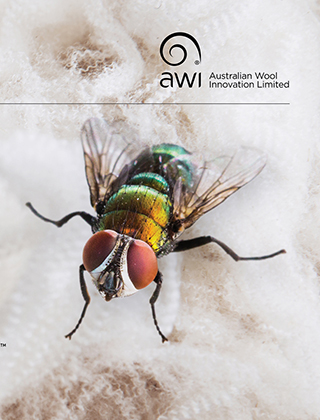How do dry times affect worms?

What actually happens to worms during dry periods? And how are they best controlled during these times in those (normally) moderate to high rainfall regions where worms are normally present?
Many livestock producers are surprised to find sheep severely affected by worms during long dry periods, or are dismayed when sheep succumb to worms soon after it rains.
In regions where drenching is normally required, worms will still be present during dry times, and lighter sheep will be far more susceptible. Regular worm egg counts indicate when drenches are required, preventing losses, especially of poorer sheep.
In the normally lower rainfall areas, regardless of long dry periods, it is usually sufficient to monitor worm egg counts about six weeks after there has been enough rain to generate a green pick (new green pasture). Recommendations for the moderate to higher rainfall areas are detailed below.
Worms in the sheep
The first source of worms is the sheep themselves; they carry worms into a dry period, and can suffer the ill effects many months after conditions have turned dry.
Worms on the pasture
The second source is worm larvae, which live for many months on the pasture, despite dry conditions. View a summary of the factors contributing to paddock contamination with worms on WormBoss at www.wormboss.com.au/roundworms-2/worms-on-pasture.
In the first six months after the rain stopped:
Larvae not ingested with pasture die, not because it is dry, but because they run out of stored energy, as larvae do not eat. The majority – about 90% – die in about six months under cooler conditions, three months under hotter conditions, and even faster when extremely hot. Very few survive more than one year.
Therefore, larvae that hatched in wetter conditions before the rain stopped may be on the paddock for many months despite lack of rain. When the sheep eat the contaminated pasture, especially as they graze lower and lower, the larvae are ingested and some establish in the sheep. Worm burdens in the sheep can rise quite quickly when they lose condition, because under-nutrition reduces their immunity to worms.
But by about six months from the last significant rain (10–15 mm or more over a few days) that source of larvae has declined to very low levels.
WormTest each 1–2 months, in both normal years and the first 6 months of a dry period:
- Barber’s pole worm areas: 4-weekly in warm months; 6-weekly in cooler months
- Non-Barber’s pole worm areas: 5–6 weekly for young sheep; up to 2-monthly for adult sheep in good body condition on better feed.
After the first six months since the rain stopped:
Once most of the worm larvae that developed prior to the dry times have died, new worms can only originate from new contamination, that is, from the worms living in the stock during dry times.
The question is: will the worm eggs being passed in dung that is landing on a dry paddock survive, develop to infective larvae, and become available for ingestion by the stock?
Generally, all nematode worm species will hatch and develop into larvae within a moist faecal pellet and then move out onto the pasture. However, the brown stomach worm (Teladorsagia) and black scour worm (Trichostrongylus) are able to survive within the faecal pellet for weeks during very dry times, except with extreme summer heat. Barber’s pole worm (Haemonchus contortus) has less ability to do this and will generally die within a week or so if there has not been about 10–15 mm of rain.
If sufficient rain dissolves the dung pellet, any living scour worm larvae are released onto the surrounding ground and they can move onto the new pasture and be ingested by stock.
But while it remains dry the risk is low.
There is some concern that sheep eat dirt with pulverised dry dung when eating grain trailed on the ground and will gain a worm infection under these conditions. However, there is no evidence of significant pick up of these larvae from the ground when the paddocks are dry with little or no pasture. It’s not until some green pasture has developed that the new larvae that were still in the faecal pellets start to move out. In practice, significant re-infection of sheep is usually some weeks later, once green pasture is well established.
When there has been no rain, but areas of green grass continue to grow along creekbanks, channels and drains, in soaks from springs, or even where a trough or pipe is continually leaking into a large area, there is potential for eggs to develop to infective larvae. Stock will concentrate on this looking for any available feed, therefore there will also be a concentration of dung dropped there. The sheep that continue to graze there can then become infected with worms. Unless these areas are very extensive, they are not likely to lead to heavy worm burdens, however worm egg counts are a wise precaution.
After 6 months of no rain, if sheep have continued access to large moist areas with growing grass, continue to monitor worm egg counts about every 6 weeks. If there is no green grass and there have been no falls of 10–15 mm rain (over a few days) for more than 6 months, extend monitoring to 2-monthly in Barber’s pole worm areas and 3-monthly in non-Barber’s pole worm areas. Check earlier if you are concerned.
Worms after it rains
‘Drought-breaking rain’ is not required to cause a large increase in worms. Worm eggs develop and are released from the faecal pellets after about 10–15 mm of rain falling across a few days, although in hotter areas some follow up rain will be required.
Green pick resulting after rain is a good indicator that worm eggs have been able to hatch and develop, and larvae are available on pasture.
Monitor worm egg counts 5–6 weeks after rainfall that results in green pick, and continue monthly testing as the pasture comes away.
Summary
Extended periods of dry weather do decrease the ability of worms to develop on pasture. However, it does not afford sheep protection from worms, as they are likely to go into a dry period with worms and even moderate occasional showers can fuel worm hatching.
Stock that are poorer in condition due to long dry periods are more susceptible to worms. Worm egg counts are a simple and affordable method to monitor stock during dry periods to give peace of mind and the knowledge of when to drench.
More information: www.wormboss.com.au

Tap into best practice parasite management
Collectively, the three Boss sheep websites – WormBoss, LiceBoss and FlyBoss – promote best practice for the management of sheep parasites at the farm level.
They are sources of detailed management information and regional programs that will assist in managing the major parasite risks for sheep.
The websites have been developed by a community of veterinary experts and parasitologists from across Australia and supported by the sheep industry.
Subscribe to the free Boss Bulletin e-newsletter from ParaBoss for monthly updates and articles. Subscribe at www.paraboss.com.au/register and follow ParaBoss on Facebook at www.facebook.com/paraboss.com.au














